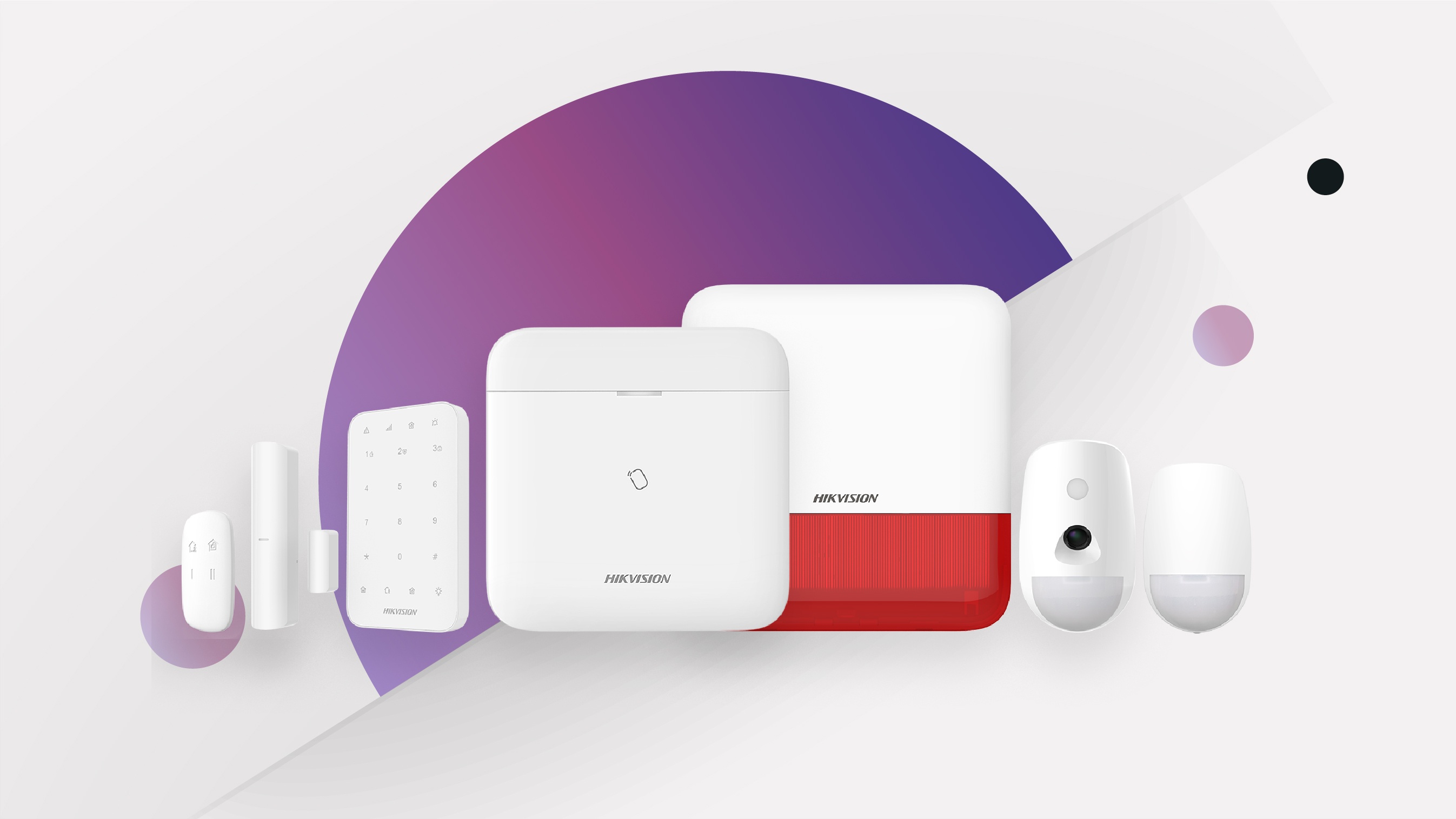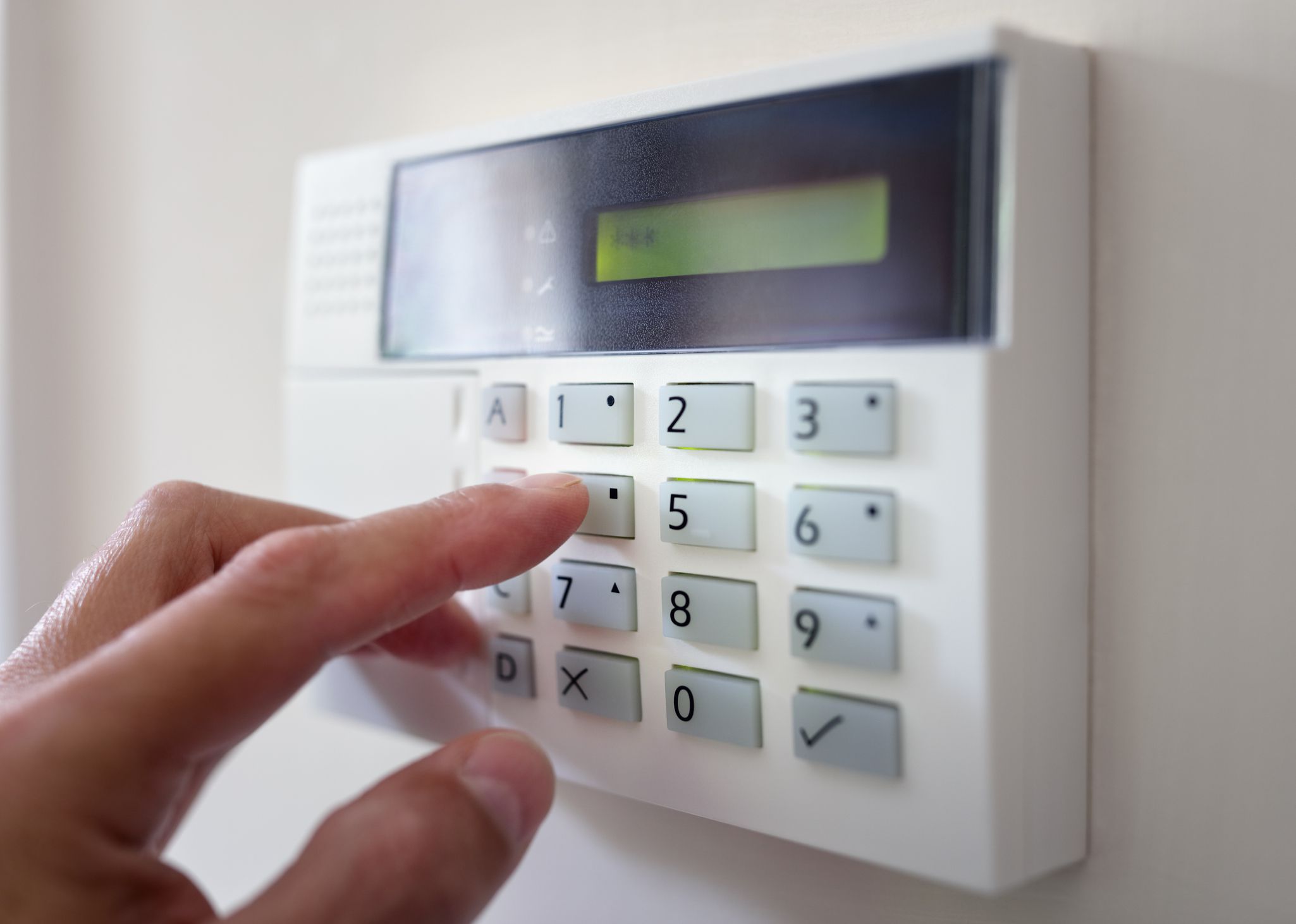Home>Home Security and Surveillance>What Are Physical Intrusion Detection Systems


Home Security and Surveillance
What Are Physical Intrusion Detection Systems
Modified: March 6, 2024
Learn about physical intrusion detection systems and how they enhance home security and surveillance.
(Many of the links in this article redirect to a specific reviewed product. Your purchase of these products through affiliate links helps to generate commission for Storables.com, at no extra cost. Learn more)
Introduction
Welcome to the world of home security and surveillance, where peace of mind and protection become paramount. In recent years, the need for effective security measures has grown exponentially, as individuals and families strive to safeguard their homes from potential threats and intrusions. One key component of a comprehensive home security system is a physical intrusion detection system.
A physical intrusion detection system, also known as PIDS, is designed to detect unauthorized entry or access to a building or property. It serves as the first line of defense, alerting homeowners or security personnel to any potential breaches in security. PIDS can be incredibly effective in preventing theft, vandalism, or even more serious crimes.
With a wide range of options available on the market, it is essential to understand the different types of physical intrusion detection systems and their benefits. This knowledge will help homeowners make an informed decision about which system is best suited to their specific needs and circumstances.
In this article, we will delve into the world of physical intrusion detection systems, exploring the various types, advantages, components, installation and maintenance, limitations, and even provide examples of these systems in action. By the end of this comprehensive guide, you will have a clear understanding of how physical intrusion detection systems can enhance the security of your home.
Key Takeaways:
- Physical intrusion detection systems are like a security guard for your home, using sensors and alarms to detect and alert you to potential threats. They offer customizable solutions and 24/7 monitoring for peace of mind.
- While physical intrusion detection systems provide early detection and crime deterrence, they may have limitations like false alarms and reliance on power. Proper installation, maintenance, and user training are crucial for their effectiveness.
Read more: What Is Wireless Intrusion Detection
Definition of Physical Intrusion Detection Systems
Physical intrusion detection systems are security solutions designed to detect and alert individuals to unauthorized entry or access to a premise. These systems utilize a combination of sensors, detectors, alarms, and surveillance technologies to detect disturbances and activate appropriate responses.
The primary objective of a physical intrusion detection system is to prevent or mitigate potential threats, such as burglary, vandalism, and unauthorized access. By strategically placing sensors and detectors, these systems create a virtual perimeter around the premise, effectively detecting any breaches and notifying the homeowner or security personnel.
Physical intrusion detection systems can be customized to suit different types of premises, including residential homes, commercial buildings, and industrial facilities. They come in a variety of forms, ranging from simple alarm systems to complex integrated solutions that incorporate video surveillance, access control, and automation.
These systems offer a proactive approach to security, as they can detect and respond to threats in real time. They provide an additional layer of protection, working alongside other security measures, such as locks, gates, and security cameras.
It is important to note that physical intrusion detection systems are not standalone solutions but are often integrated into a comprehensive security system. They work in conjunction with other security components to ensure a robust and reliable defense against potential intruders.
Overall, physical intrusion detection systems play a crucial role in enhancing the security of a premise by providing early detection, rapid response, and comprehensive coverage. With their advanced technology and customizable features, these systems empower homeowners and security personnel to effectively safeguard their properties, assets, and loved ones.
Types of Physical Intrusion Detection Systems
Physical intrusion detection systems come in various forms, each tailored to meet the specific security needs and requirements of different premises. Here are some of the most common types:
- Perimeter Intrusion Detection Systems (PIDS): These systems are designed to secure the perimeter of a premise, detecting any attempts to breach the outer boundaries. They often utilize sensors such as motion detectors, infrared beams, or buried cables to monitor the area. PIDS can be used for residential homes, commercial buildings, or even large outdoor areas.
- Interior Intrusion Detection Systems: As the name suggests, these systems focus on securing the interior of a premise. They are typically used in combination with perimeter detection systems to provide comprehensive coverage. Interior intrusion detection systems can include motion detectors, glass break sensors, or door/window sensors to detect unauthorized entry or movement within the premise.
- Video Surveillance Systems: While not exclusively an intrusion detection system, video surveillance plays a critical role in monitoring and detecting potential intrusions. CCTV cameras are strategically placed throughout the premise to record and monitor activity. With advancements in technology, video surveillance systems can now include advanced analytics and motion detection features.
- Access Control Systems: Access control systems restrict and monitor entry to a premise, ensuring that only authorized individuals can gain access. These systems often include keypads, card readers, biometric scanners, or even facial recognition technology. By controlling access points, access control systems effectively prevent unauthorized entry.
- Alarm Systems: Alarm systems are one of the most common types of intrusion detection systems. They are designed to detect disturbances, such as unauthorized entry, and emit a loud audible alarm to alert occupants or security personnel. Modern alarm systems can be connected to a central monitoring station, which can dispatch authorities in the event of an alarm activation.
While these are some of the primary types of physical intrusion detection systems, it’s important to note that there may be variations or combinations of these systems available in the market. The specific type of system chosen will depend on factors such as the size of the premise, the level of security required, and the budgetary constraints of the homeowner or the organization.
Advantages of Physical Intrusion Detection Systems
Physical intrusion detection systems offer numerous advantages in enhancing the security and safety of a premise. Here are some key benefits:
- Early Detection of Intrusions: Physical intrusion detection systems are designed to detect unauthorized entry or access to a premise in real time. By providing early detection, these systems can quickly alert homeowners or security personnel to potential threats, allowing for prompt response and intervention.
- Crime Deterrence: The presence of physical intrusion detection systems can act as a deterrent to potential intruders or criminals. Knowing that a premise is equipped with advanced security measures can discourage them from attempting to breach the security and target the property.
- 24/7 Monitoring: Physical intrusion detection systems can provide round-the-clock monitoring of a premise, ensuring that any intrusion or suspicious activity is promptly detected and addressed. This constant vigilance offers homeowners peace of mind and helps to maintain a secure environment.
- Customizable Solutions: Physical intrusion detection systems can be customized to meet the specific needs and requirements of a premise. Whether it’s a small residential home or a large commercial building, these systems can be tailored to provide the appropriate level of security coverage. This flexibility allows homeowners to choose the components and features that best fit their security objectives.
- Integration with Other Systems: Physical intrusion detection systems can be integrated with other security systems, such as video surveillance, access control, or automation. This integration enhances the overall effectiveness of the security solution and provides a comprehensive approach to protecting the premise.
- Immediate Response: When an intrusion is detected, physical intrusion detection systems can activate immediate responses, such as sounding an audible alarm, notifying homeowners or security personnel, or even triggering video recording. These rapid responses help to deter intruders and provide critical evidence for investigation purposes.
With their ability to detect intrusions, deter crimes, provide continuous monitoring, and offer customizable solutions, physical intrusion detection systems have become an essential component of modern home security. They provide homeowners and businesses with a heightened level of security and peace of mind, ensuring that their properties, assets, and loved ones are protected.
Components of Physical Intrusion Detection Systems
Physical intrusion detection systems consist of several key components that work together to detect and prevent unauthorized access to a premise. Understanding the role of each component is essential in designing an effective security system. Here are the main components of a physical intrusion detection system:
- Sensors: Sensors are the primary components that detect changes or disturbances within the environment. Common types of sensors used in physical intrusion detection systems include motion sensors, vibration sensors, glass break sensors, and magnetic contacts. These sensors are strategically placed throughout the premise to detect any unauthorized activity or breaches.
- Control Panel: The control panel serves as the central command unit of the intrusion detection system. It receives information from the sensors and processes it to determine if an intrusion has occurred. The control panel also manages system functions, such as arming and disarming the system, and can be connected to other security components, such as alarms and surveillance cameras.
- Alarms: Alarms are an essential component of physical intrusion detection systems, as they provide audible or visual alerts when an intrusion is detected. The alarms can be in the form of sirens, strobe lights, or even voice notifications. The purpose of alarms is to alert occupants or security personnel to an intrusion or unauthorized access and prompt immediate action.
- Communication Devices: Communication devices are used to transmit alarm signals or notifications to homeowners or the central monitoring station. These devices can include telephone lines, cellular networks, or internet connections. By having effective communication devices, the system can quickly relay critical information in case of an intrusion.
- Keypads or Access Control Devices: Keypads or access control devices are used to input a security code or authenticate access to the premise. These devices are typically placed near entry points or at strategic locations within the building. By requiring authorized individuals to input their credentials or security code, the system ensures that only authorized personnel can access the premise.
- Surveillance Cameras: While not exclusive to intrusion detection systems, surveillance cameras play a critical role in capturing and monitoring activities within and around the premise. These cameras can be connected to the intrusion detection system, providing visual evidence in the event of an intrusion. Modern surveillance cameras may include features like motion detection, night vision, and remote access for real-time monitoring.
By integrating these components into a cohesive system, physical intrusion detection systems can effectively detect and prevent unauthorized access, provide prompt notifications, and enhance the overall security of a premise.
Read more: What Is Chassis Intrusion Detection
Installation and Maintenance of Physical Intrusion Detection Systems
The installation and maintenance of physical intrusion detection systems are crucial to ensure their effectiveness and reliability. Proper installation and regular maintenance are essential in maximizing the performance of the system and minimizing false alarms. Here are some key considerations for the installation and maintenance process:
Installation:
1. Site Assessment: Before installation, a thorough site assessment should be conducted to identify potential vulnerabilities and determine the optimal placement of sensors, cameras, and other components. This assessment helps to ensure that the system is strategically positioned to detect potential intrusions effectively.
2. Professional Installation: It is highly recommended to have a professional security company or experienced technician install the physical intrusion detection system. Professionals have the knowledge and expertise to properly install and configure the system according to the specific requirements of the premise.
3. Testing and Calibration: After installation, thorough testing and calibration should be performed to ensure that all components are functioning correctly. This includes testing sensors, verifying communication devices, and configuring the control panel. Adequate testing helps to identify any issues or malfunctions before the system is put into full operation.
Maintenance:
1. Regular Inspections: Regular inspections of the system should be conducted to check for any physical damage or signs of tampering. This includes inspecting sensors, cables, cameras, and other components to ensure they are in good working condition and properly secured.
2. Firmware and Software Updates: It is important to keep the intrusion detection system up to date by installing firmware and software updates provided by the manufacturer. These updates often include bug fixes, performance enhancements, and new features that improve the overall reliability and functionality of the system.
3. Battery Replacement: If the system includes battery-powered components, such as sensors or control panels, regular battery checks and replacements should be scheduled. This ensures that the system remains operational even during power outages or disruptions.
4. User Training: It is crucial to provide training to users and occupants of the premise on how to operate the physical intrusion detection system correctly. They should be familiar with arming and disarming the system, understanding alarm signals, and responding to potential threats or emergencies.
5. Monitoring Services: Consider subscribing to professional monitoring services that can provide 24/7 monitoring and response in case of an intrusion or alarm activation. These services can dispatch authorities or notify designated contacts to ensure a prompt response to potential threats.
By following these installation and maintenance best practices, homeowners can ensure that their physical intrusion detection system remains in optimal working condition and provides reliable protection for their premise.
When installing a physical intrusion detection system, make sure to place sensors in vulnerable areas such as doors, windows, and other entry points. Regularly test and maintain the system to ensure it is functioning properly.
Limitations of Physical Intrusion Detection Systems
While physical intrusion detection systems offer significant benefits in enhancing security, they also have certain limitations that users should be aware of. Understanding these limitations is important for setting realistic expectations and making informed decisions. Here are some key limitations of physical intrusion detection systems:
- False Alarms: Physical intrusion detection systems can be susceptible to false alarms. Factors such as environmental conditions, animals, or even human error can trigger false alarms. Regular maintenance, proper calibration, and user education can help minimize false alarms, but they can still occur on occasion.
- Reliance on Power: Physical intrusion detection systems typically require a power source to operate. In the event of a power outage or disruption, the system may be temporarily rendered ineffective unless it has a backup power supply. It is essential to have contingency plans in place for power outages to maintain security coverage during such situations.
- Limited Coverage: Physical intrusion detection systems have a specific coverage area, and breaches that occur outside of that area may go undetected. It is important to strategically plan the placement of sensors and components to maximize coverage and minimize blind spots. Additional security measures, such as security cameras or access control systems, can complement the physical intrusion detection system to provide broader coverage.
- Environmental Interference: Environmental factors, such as extreme weather conditions, electromagnetic interference, or obstructions, can affect the performance of physical intrusion detection systems. For example, heavy rain or strong winds may trigger false alarms, or large obstacles may block signal transmission. Proper system design, regular maintenance, and selecting components suitable for the environment can help mitigate these issues.
- Cost: Implementing a physical intrusion detection system may involve significant upfront costs, depending on the scope and complexity of the system. Factors such as the size of the premise, the number of sensors and components required, and the level of integration with other security systems can contribute to the overall cost. Regular maintenance and potential upgrades may also incur additional expenses.
Despite these limitations, physical intrusion detection systems continue to be valuable tools in enhancing security. By understanding their limitations and addressing them appropriately, users can optimize the effectiveness and reliability of the system.
Read more: What Is An Audit And Intrusion Detection
Examples of Physical Intrusion Detection Systems
There are numerous physical intrusion detection systems available on the market, each with its own unique features and capabilities. Here, we provide a glimpse into some popular examples:
- Wireless Motion Sensor Alarms: These systems consist of wireless motion sensors that detect movement within a designated area. When an intruder is detected, the sensor triggers an alarm, alerting occupants or security personnel. Wireless motion sensor alarms are easy to install, making them suitable for both residential and commercial properties.
- Electric Fence Systems: Electric fence systems are commonly used to secure the perimeter of a premise. These fences deliver a non-lethal electric shock to discourage and prevent unauthorized access. When the fence is tampered with, an alarm is triggered, and a security response can be initiated. Electric fence systems are widely used in industrial and commercial settings.
- Glass Break Sensors: Glass break sensors are designed to detect the sound frequency associated with breaking glass. They are typically installed near windows or glass doors and can differentiate between normal sounds and the specific frequency of glass breaking. When the sensor detects the glass break, it activates an alarm, alerting occupants or security personnel to the potential intrusion.
- Video Surveillance Systems with AI Analytics: Advanced video surveillance systems incorporate artificial intelligence (AI) analytics to detect and analyze human movement within the camera’s field of view. These systems can differentiate between regular activities and suspicious behavior, triggering alerts and notifications. AI-based video surveillance systems are becoming increasingly popular for residential and commercial security applications.
- Perimeter Beacons and Laser Detectors: Perimeter beacons and laser detectors create an invisible barrier around the perimeter of a premise. When an intruder breaches the barrier, an alarm is triggered. These systems are often used to secure large outdoor areas, such as warehouses, industrial facilities, or construction sites.
These are just a few examples of the wide range of physical intrusion detection systems available. It’s important to consider the specific security needs and requirements of a premise when selecting a system. Consulting with a professional security provider can help identify the most suitable physical intrusion detection system for a given situation.
Conclusion
Physical intrusion detection systems play a vital role in safeguarding homes and properties from potential threats and intrusions. By detecting unauthorized entry or access, these systems provide an early warning and act as a deterrent to potential intruders. With the wide variety of physical intrusion detection systems available, homeowners can choose the system that best suits their needs and requirements.
Throughout this article, we have explored the definition of physical intrusion detection systems, the different types available, their advantages, components, installation and maintenance, as well as their limitations. By understanding these aspects, homeowners can make informed decisions about implementing a physical intrusion detection system as part of their overall security strategy.
With their capability to detect intrusions in real time, physical intrusion detection systems offer peace of mind to homeowners, ensuring the safety of their loved ones and the protection of their valuable assets. By providing early detection and rapid response, these systems enhance overall security and can help prevent potential crimes and damages.
However, it is important to recognize the limitations of physical intrusion detection systems, such as false alarms, reliance on power, limited coverage, environmental interference, and associated costs. Proper installation, regular maintenance, and user education are essential to mitigate these limitations and maximize the effectiveness of the system.
In conclusion, physical intrusion detection systems are an essential component of modern home security. By integrating advanced technology, strategic placement of sensors, and integration with other security components, homeowners can create a comprehensive security solution that effectively protects their homes and provides peace of mind. With their ability to detect and deter potential intruders, physical intrusion detection systems form a crucial part of a well-rounded security strategy.
Frequently Asked Questions about What Are Physical Intrusion Detection Systems
Was this page helpful?
At Storables.com, we guarantee accurate and reliable information. Our content, validated by Expert Board Contributors, is crafted following stringent Editorial Policies. We're committed to providing you with well-researched, expert-backed insights for all your informational needs.













